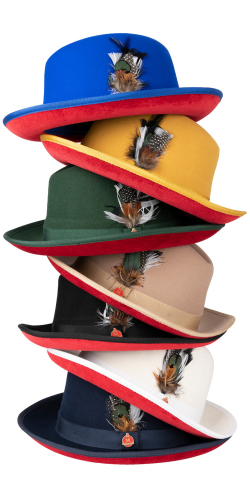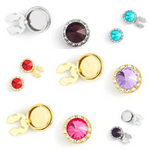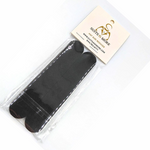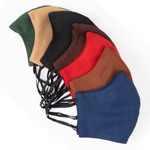Ever wondered why you feel more confident in some colors and less in others? It's not just in your head; colors have a powerful impact on how we feel and how others see us. That's why picking the right color for your walking suit is more than just a fashion statement—it's a way to express who you are and how you want to be seen.
Choosing the perfect color for your walking suit is crucial. It can make the difference between blending in and standing out, between feeling okay and feeling unbeatable. That’s why understanding a bit of color theory can go a long way in boosting your style game.
Let’s dive into the colorful world of fashion and discover how to use color theory to pick the best shades for your walking suits, ensuring you always look and feel your best.
Basics of Color Theory
So, what is color theory? It’s a set of guidelines that artists and designers use to communicate with colors effectively. It's not just for painters or graphic designers; it's super useful for fashion lovers too.
Here’s a quick rundown:
- Primary Colors: Red, blue, and yellow - these are the building blocks for all other colors.
- Secondary Colors: Green, orange, and purple - these are made by mixing primary colors.
- Tertiary Colors: These are created by mixing a primary and a secondary color, giving you hues like blue-green or red-orange.
The color wheel is a handy tool in color theory that shows how these colors relate to each other. Colors next to each other are called adjacent colors, and they usually look good together because they’re similar. Colors opposite each other are complementary colors, and they create a vibrant look when used together because they stand out against each other.
Understanding Color Temperatures
Colors aren't just pretty; they have temperatures too! Sounds cool, right? Let's break it down:
- Warm Colors: These are your reds, oranges, and yellows. They’re like the colors of fire and sunshine, giving off a cozy, inviting vibe.
- Cool Colors: Think blues, greens, and purples, like the ocean or a shady forest. They have a calming effect and can make you feel more relaxed.
- Neutral Colors: These are your blacks, whites, grays, and browns. They’re super versatile and can work with just about any other color.
Choosing the right color based on your skin tone can really enhance your look. If you have a cooler skin tone (your skin has hints of blue or pink), cool colors can really complement your complexion. For warmer skin tones (your skin has yellow or golden undertones), try rocking those warm colors to bring out your natural glow. Neutral colors? They’re everyone’s friend, working well with most skin tones.
Psychological Effects of Colors
Colors do more than match with your shoes; they can actually change the way people see you and how you feel. Let’s see what some popular suit colors can do:
- Blue: It’s one of the most beloved colors for walking suits because it’s all about reliability and trust. Wear a blue suit, and you might just notice people treating you like the dependable guy in the room.
- Black: Want to look serious and sophisticated? Black is your go-to. It’s perfect for formal events where you want to impress and show that you mean business.
- Gray: This color is super flexible but carries an air of balance and calm. It’s less severe than black, making it great for both professional settings and more casual ones.
- Red: Ready to stand out and grab some attention? Red is bold and full of energy. It might just give you that extra boost of confidence you need at a party or a special date.
Seasonal Color Choices
Seasons change, and so should the colors in your wardrobe! Each season brings its own vibe, influencing the colors that are trendy and appropriate. Here’s how to pick the right shades for your walking suit as the year progresses:
- Spring: This season is all about fresh starts and soft colors. Think pastels like baby blue, mint green, or a gentle lavender. These colors reflect the blooming nature around you and keep your look light and airy.
- Summer: It’s time to brighten things up! Bold and vibrant colors work great in summer. Go for sunny yellows, bright blues, or even a daring turquoise to match the upbeat energy of the season.
- Fall: As leaves change, so should your color palette. Rich, earthy tones like burnt orange, mustard yellow, and deep burgundy mirror the colors of autumn and add a warm touch to your attire.
- Winter: Darker, deeper colors fit the mood of winter. Navy, dark gray, and classic black can make your outfit feel as cozy as it looks, perfect for the chillier weather.

Choosing Colors Based on Occasion
Selecting the right color for your walking suit also depends on where you’re planning to wear it. Here’s a quick guide to help you choose wisely for different settings:
- Corporate: In a professional setting, you want to convey seriousness and reliability. Stick to classic colors like navy, charcoal, or black. These shades are business-appropriate and never go out of style.
- Casual: For more laid-back occasions, you can play around with colors a bit more. Lighter grays, blues, or even subtle patterns can make your suit feel casual but stylish.
- Social Events: Parties or social gatherings are your chance to stand out. Don’t be afraid to experiment with bold colors or even patterns. A deep red or vibrant blue can make you the life of the party.
Balancing Standout Colors with Classic Neutrals
While it’s great to experiment with color, balancing these with neutrals ensures you never go overboard. If you choose a bright or unusual color for your suit, pair it with neutral shirts, shoes, or accessories. This balance keeps your outfit grounded and stylish without overwhelming the eye. Conversely, if your suit is a neutral color, consider adding a pop of color with a vibrant tie or a pocket square to spice things up.
Mixing and Matching Colors
Mastering the art of color coordination in your outfits can transform the way you dress, making each walking suit look customized and fresh. Here’s how to skillfully mix and match colors:
-
Create Balance: Start with a base color that's neutral, like navy, gray, or black. From there, add colors through accessories or shirts to bring vibrancy without overpowering. For instance, a navy walking suit pairs beautifully with a pale pink shirt and a burgundy tie for a touch of warmth and contrast.
-
Complementary Colors: Use the color wheel to find complementary colors (those directly opposite each other). A green tie could really pop against a burgundy walking suit, providing a sharp, eye-catching contrast that’s perfect for special occasions.
-
Analogous Scheme: For a more subdued look, choose colors next to each other on the color wheel. A charcoal suit with a deep green shirt and a teal tie creates a harmonious and sophisticated palette.
Examples of Successful Color Combinations:
- Classic Contrast: Black walking suit with a white shirt and a red tie. Simple yet striking.
- Soft and Subtle: Light gray suit with a pastel blue shirt and a navy tie. Ideal for spring and summer.
- Rich and Earthy: Dark brown suit paired with a burnt orange shirt and a tan tie. Great for fall events.
Accessorizing with Colors
Choosing the right accessories can make or break your outfit. They're the finishing touches that can subtly enhance or boldly define your look:
-
Ties: A colorful tie can serve as a focal point. If your suit and shirt are understated, a bright or patterned tie can add just the right amount of flair.
-
Shoes and Belts: These should generally match in color and be in harmony with the suit. For a classic look, stick to black or brown, but for more adventurous outfits, colored leather in burgundy or navy can add an unexpected twist.
-
Pocket Squares: These should complement but not exactly match the tie. If you’re wearing a solid tie, consider a patterned pocket square that includes the tie’s color within its design to tie the look together.
Importance of Consistency and Accentuation in Color Choice:
-
Consistency: Keeping a consistent theme or color scheme in your outfit helps in presenting a polished look. This doesn’t mean everything must match perfectly, but the colors should feel cohesive.
-
Accentuation: Use colors to highlight your best features or aspects of the outfit you want to draw attention to. A bright pocket square can draw the eye upward, accentuating a well-tailored jacket.
Care and Maintenance of Colored Fabrics
To keep the colors of your walking suits vibrant and the fabrics looking their best, it's crucial to give them the proper care. Here’s how to maintain the richness and prevent fading over time:
-
Washing: Always check the care label before laundering your suit. Most walking suits should be dry cleaned to preserve their color and structure. If washing at home is recommended, use cold water and a gentle detergent, and wash similar colors together to avoid color transfer.
-
Sunlight: Prolonged exposure to direct sunlight can cause the colors in your fabrics to fade. Store your walking suits in a cool, dark place, or use garment covers to protect them from light when not in use.
-
Storage: Hang your suits on quality wooden hangers to maintain their shape and prevent wrinkles. Avoid overcrowding your closet to ensure that the fabrics can breathe and are not pressed against different colors which might cause color bleeding in humid conditions.
Wrap It Up in Style: Mastering Colorful Walking Suits
As we wrap up this colorful journey, it’s clear that understanding color theory is more than just a fashion statement—it’s a strategy that enhances your entire wardrobe. Choosing the right colors for your walking suits can dramatically affect how you look and feel. Whether you’re aiming for a look that’s subdued and professional or bold and expressive, the principles of color theory can help guide your choices.
We encourage you to not just stick with safe colors. Branch out, experiment with hues that reflect your personality, and see how different combinations affect your mood and the impressions you make. Each color has the power to tell a story—make sure it’s telling yours in the style you want.
So, take these insights, mix them with your personal flair, and use your walking suits to make a statement wherever you go. Who knew color could be such a powerful tool in your style arsenal? Go ahead, play with colors and watch your style quotient soar!










